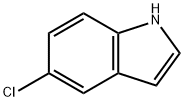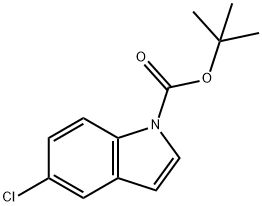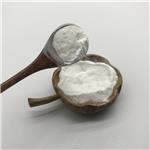Chemical Properties
White to slightly greyish-green crystalline powder
Uses
5-Chloroindole has been used in the synthesis of 5-chloro-3-indole-N,N- dimethylglyoxalamide and 5-chloro-N,N-dimethyltryptamine. It may be used in the synthesis of dyestuffs in the presence of biocatalysts. 5-Chloroindole can be synthesized by using 3-chlorobenzaldehyde as starting reagent
Uses
5-Chloroindole is a halo-substituted indole used in the preparation of neurologically active compounds such as atypical antipsychotic agents. 5-Chloroindole has been shown to depress serotonin levels
in the brainstem and telencephalon.
General Description
5-Chloroindole is a 5-substituted indole. It undergoes electropolymerization to form a redox-active film consisting of a cyclic trimer and chains of linked cyclic trimer (polymer). It is a potential positive allosteric modulator (PAM) of the 5-HT
3 receptor. It has been reported as strong inhibitor of the copper dissolution in acidic sodium chloride solution. It has been tested as corrosion inhibitor of mild steel in 1N deaerated sulphuric acid. Synthesis of 5-chloroindole, via nitration of indoline has been described.
Purification Methods
It is distilled at high vacuum and recrystallises from pet ether (b 40-60o) or (b 80-100o) as glistening plates. The picrate has m 147o (146.5-147.5o)(from *C6H6). [Rydon & Tweddle J Chem Soc 3499 1955, Sugasawa J Org Chem 44 578 1979, Beilstein 20/4 V 34.]





